If you’re anything like me, you bring home your nursery purchases with zeal and hope, piling them nicely in the garden corner for temporary storage until you can place them where you envisioned on the drive home. But a funny thing usually happens — you’ll spend an hour walking the garden, pot in hand, trying to find the right place before giving up. It’s good exercise, but it’s frustrating.
Gardeners and landscape designers have to think not just about where plants should go, but also about how they’ll perform in changing weather, and perhaps in a changing climate overall. In essence, every small home landscape has a great opportunity to be an adaptable example of good design that helps the environment — and when linked together, these smaller landscapes equal big-time change. Here are some of the key issues to think about as you garden for the future.
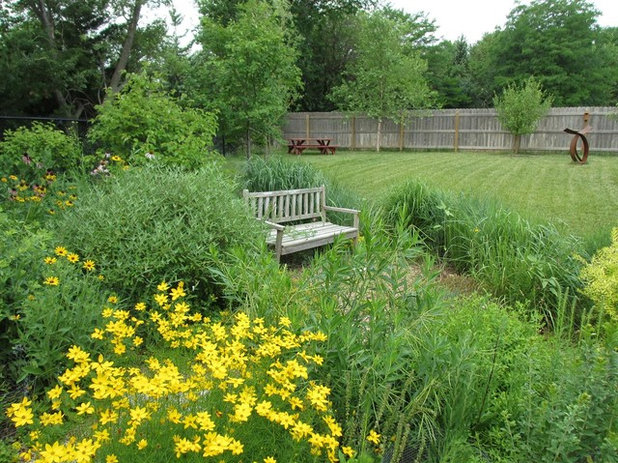
Benjamin Vogt / Monarch Gardens
1. Less lawn. Demands on fresh water are likely to grow, and many are questioning its use to maintain large expanses of seldom-used lawn. With automatic sprinklers we also tend to get forgetful, so our lawns get water even during a hard rain (I see it far too often). Combine that with street runoff and evaporation on a hot, windy afternoon, and much water never gets into the root zone anyway. Expanding our gardens with site-chosen plants and limiting lawn will save resources (water, fertilizer, fuel) and cut down on maintenance costs.
How to Replace Your Lawn With a Garden
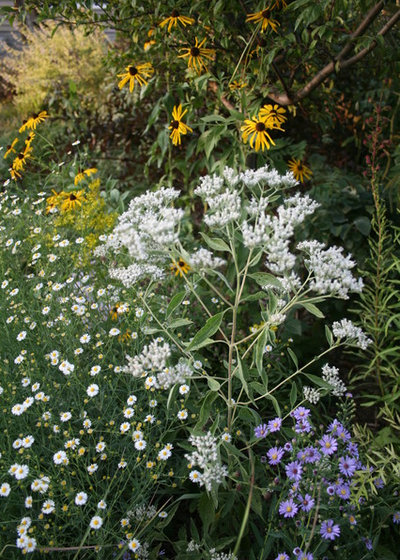
Benjamin Vogt / Monarch Gardens
2. Use more regionally adapted plants. This most often means native plants, which are already adapted to regional boom-and-bust cycles, better able to weather the extremes and solid supporters of local wildlife. Think about prairie wildflowers and grasses with deep roots — they survive brutally cold, windy winters and scorching, humid summers.
And when you are able to find plants with local or regional genetic origins, you’ll be going a step further — that plant will be well adapted to your locale (a bluestem grass in Iowa is genetically different than one in Nebraska, for example, because the climates and even microclimates are different).
See how to grow native plants for your region
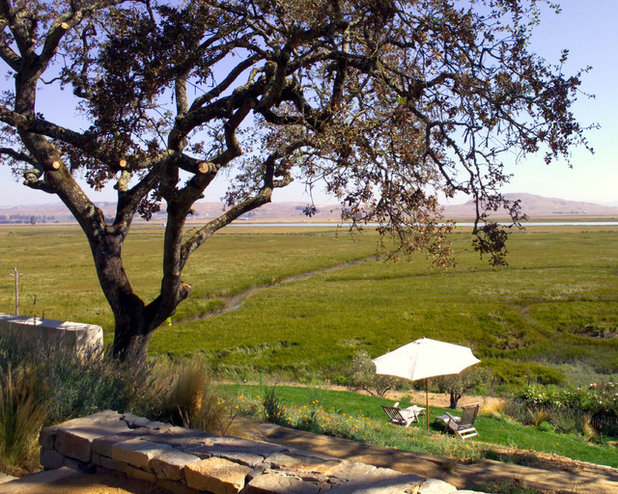
Sutton Suzuki Architects
3. Plant for the future. You know that saying about planting a tree today is for future generations and not for you? Well, the same could be said about almost any garden plant, especially long-lived perennials.
The USDA categorized 50 percent of the country a half zone warmer sooner than it had anticipated doing so. A tree or flower planted today for a specific location might not be suited for it in 10 or 20 years. This means looking more closely at drought- or monsoon- tolerant and adaptable species. This kind of creative thinking will help the plants and your budget down the road.
See great reasons to plant a tree
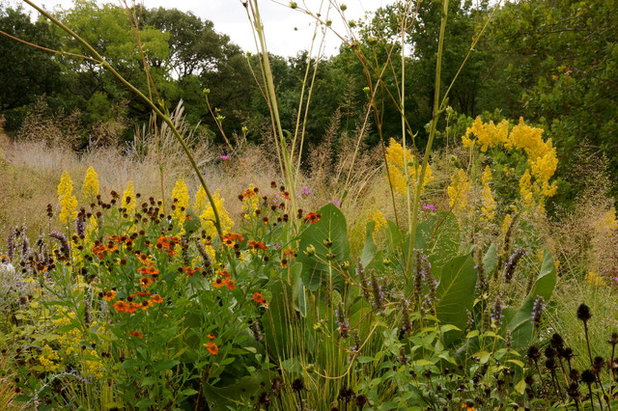
Adam Woodruff + Associates, Garden Artisans
4. Diversity in plant choices. If you can also use a vast array of woody and perennial species, you’ll help the garden combat new waves of unknown pests and diseases. It’s sort of like avoiding the use of many ash trees but instead mixing in oak, elm, mulberry etc. If one species goes down, you’ll have plenty of others to pick up the slack and provide beauty for you and value to wildlife.
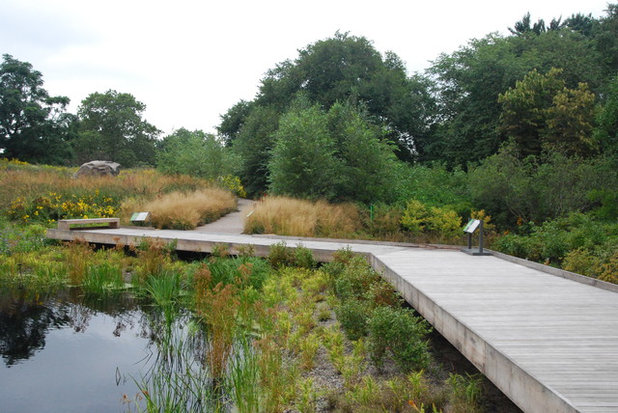
Paintbox Garden
Avoiding homogenous, monoculture-like landscapes is not only key for your wallet and wildlife, but will make your garden more unique.
Right now lots of landscapes around the country tend to use many of the same plants — I always think of hosta, daylily and barberry, but there are many more. These plants are often reproduced via cuttings instead of seed, so they remain true; this ensures a predictable plant for the industry but takes away from genetic variability that evolves and adapts to climate and pests. It’s more likely that a Rudbeckia in Atlanta has more in common genetically with one in Chicago than wild ones just outside the city limits.
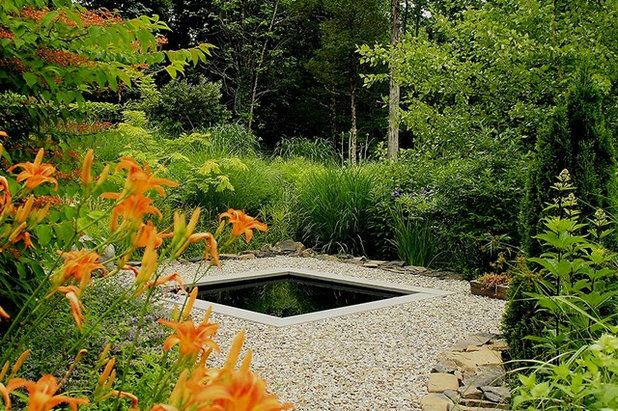 5. Plan more. Adapt more.
5. Plan more. Adapt more. A garden will never be static anyway, but with new weather patterns and previously unseen wildlife coming through — from birds to bugs — plants may come and go more frequently. If we can’t provide biodiversity in our gardens that can better handle these changes, wildlife will suffer. Hopefully, learning these lessons in our gardens will carry over into becoming active outside of them.
The best things you can do are to put the right plant in the right place, encourage diversity, research plant choices and hardscape more thoroughly, harvest rainwater and use more compost that encourages soil microbes and better soil structure. (A resilient garden begins with healthy soil.)
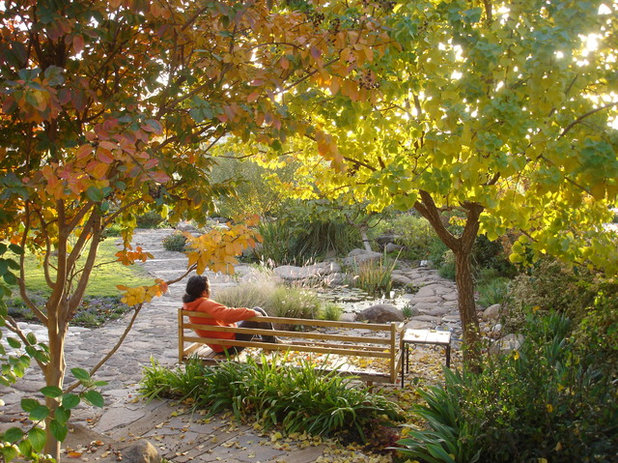
GARDENIA-Sharly & Tanya Illuz
I wonder what our gardens will witness in the future. I wonder what they will teach us about our actions on the planet, about wildlife, about plants. No matter what, make sure you stop to listen and feel your garden as you evolve with it. Let the garden teach you. Let plants come and go, and move around as you pay attention to what works and what doesn’t. These are lessons not just for a resilient garden, but for a resilient life.
More: How to Find the Right Plants for Your Garden





